The Latest from Boing Boing |  |
- Raising money to build an arts center on Vanuatu
- Koko Be Good: complex and satisfying graphic novel about finding meaning in lifecomplex
- Boing Boing's live coverage of Apple event Wednesday, Sep. 1, 10am PT
- Nagoya COP10 Primer #3: with a small reference to LOL cats
- Can crowdsourcing produce funny humor pieces? The next step
- Flying robot hand wants your beer
- Frankenmascot: all the cereal mascots in one
- Pizza oven as hellmouth
- Flurb 10: Rudy Rucker's glorious sf webzine
- As drug violence escalates, entire length of US-Mexico border to be patrolled by unmanned drones
- Brian McCarty's book of art toy photos
- Mystery of the Albino Redwoods
- My quest to recreate one of the best things I've ever tasted: omusoba
- Brain surgery c. 2000 BCE
- More cool rolling shutter effects
- Superman's Cleveland roots
- Wikileak-proofing the Pentagon
- Secret history of psychedelic psychiatry
- Improv Everywhere: Black tie at the beach
- Another superb anti-theft sign
- The scientists who make sci-fi more real
- Historical cell phone location data is a privacy intrusion, rules NY judge
- Dub Kweli
- Anti-theft warning sign
- Crucifix power strip
- Monstrous Wildlife: Graboids
- Dancing Merengue Dog
- Canadian: last chance to vote in Indigo's Teen Read poll
- Some Final Thoughts on Conventions (and a visit to Power Morphicon)
- Comic book autobiography of a teen girl's life with braces
| Raising money to build an arts center on Vanuatu Posted: 01 Sep 2010 03:46 AM PDT  DJ Spooky writes: I've started a digital media and contemporary arts lab on a remote island in the South Pacific, and I'm setting up a Kickstarter campaign to help defray the costs. In tandem with islandsfirst.org, a United Nations affiliated non-profit that focuses on the needs of South Pacific islands, I'm setting up a situation where cultural exchange between artists from different geographies can take time to do residencies on the island and create projects with local artists and creatives in conjunction with an agenda that focuses on sustainable arts practices.Tanna Center for The Arts |
| Koko Be Good: complex and satisfying graphic novel about finding meaning in lifecomplex Posted: 01 Sep 2010 03:37 AM PDT  Jen Wang's Koko Be Good continues publisher FirstSecond's amazing run of thought-provoking, challenging graphic novels for adults. It's the story of Koko, a "free spirit" in San Francisco who trades on her manic energy and good looks to bumble by in mooched accommodations, borrowed clothes, and sponged meals. Then she meets Jon, a driven young man who is about to sell everything he owns to move to Peru, where his girlfriend is working in the remote orphanage her mother grew up in. Jen Wang's Koko Be Good continues publisher FirstSecond's amazing run of thought-provoking, challenging graphic novels for adults. It's the story of Koko, a "free spirit" in San Francisco who trades on her manic energy and good looks to bumble by in mooched accommodations, borrowed clothes, and sponged meals. Then she meets Jon, a driven young man who is about to sell everything he owns to move to Peru, where his girlfriend is working in the remote orphanage her mother grew up in. Jon isn't sure about his move, but he feels he needs to be. He quit his band after finishing college (they're now becoming an indie sensation, which puts some urgency into his choice to succeed at something other than music), and now he's not sure what his life is for or what it will come to. When Jon meets Koko (she steals his tape recorder after a raucous performance at the Zeitgeist in the Mission), he finds himself subject to her withering scorn and tough questions. But the interrogation isn't one-way -- in the process of criticizing Jon's do-gooder ambitions, Koko comes to realize how empty her own life is. The two of them enter into a struggle to find meaning and happiness -- to be "good" -- and embark on a difficult journey that involves a huge cast of minor characters all engaged in their own existential battles. All the above makes the book sound moody and brooding, but it's anything but. Koko Be Good brims with manic energy and comedy, a complex story engagingly told with ingenious layouts and lovely art. |
| Boing Boing's live coverage of Apple event Wednesday, Sep. 1, 10am PT Posted: 31 Aug 2010 08:08 PM PDT 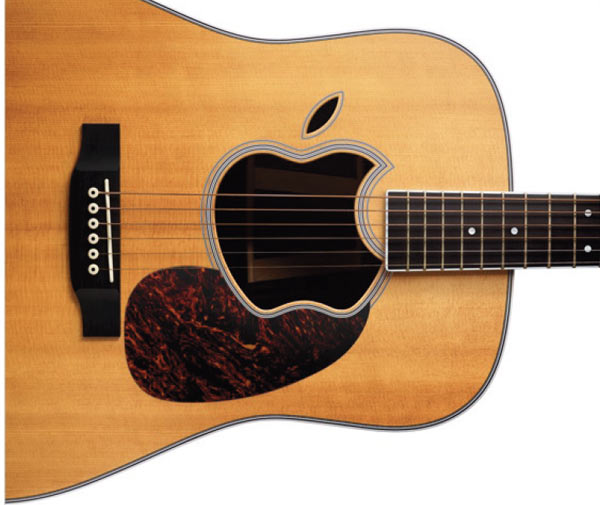 Apple is holding an invite-only press event Wednesday, September 1, in San Francisco. Above, a snip from the invitation that went out to journalists. If only we had some clue what this is all about? Look at that guitar. Just look at it. It's trying to tell us something. What does it mean? Anyway, Boing Boing will be represented, and we'll be providing some sort of live color commentary from the goat rodeo. Apple is live-streaming this one, for the first time in many years, too—so you can watch along from wherever you are at apple.com. As long as you aren't using a Windows box or an Android phone: "Viewing requires either a Mac running Safari on Mac OS X version 10.6 Snow Leopard, an iPhone or iPod touch running iOS 3.0 or higher, or an iPad."Do join us in the morning. I'll be there in person, and Rob will no doubt be lending his acerbic wit and gadget-savvy to make our coverage worth tuning in to. |
| Nagoya COP10 Primer #3: with a small reference to LOL cats Posted: 31 Aug 2010 07:57 PM PDT  (Continuing on from previous primers: 1. Star Wars | 2. Kevin Bacon) O.K. now on to business... Here are the Convention on Biological Diversity's three basic objectives: 1. The conservation of biological diversity They also have - or had rather - a goal, a biodiversity target, which was the following: In April 2002, the Parties to the Convention committed themselves to achieve by 2010 a significant reduction of the current rate of biodiversity loss at the global, regional and national level as a contribution to poverty alleviation and to the benefit of all life on Earth. This was also the reason why 2010 was proclaimed as the International Year of Biodiversity. Unfortunately, this target is way off the mark. Even the Convention itself has said this (you can read the formal admittance of this with this pdf), while other media outlets have been much more emphatic about its failure. But regardless, as far as all can tell, biodiversity loss rates have not been reduced - not even close. But this policy speak vernacular is part of the problem. Because "biodiversity" is such a huge, nuanced, and multifaceted issue, and because it's also a word and concept that's tricky to pin down in a public setting, it's really quite difficult for governments to follow along with the desires and targets of the CBD. For instance, this challenge becomes immediately obvious, if you look at the mandates again and decide to nitpick. "The conservation of biological diversity." This statement is very much about environmental stewardship, and the effects of human impact in general. It is, in many ways, the heart of the convention, but it is also an incredibly loaded statement. Here, one has to simply query what exactly is the best way of doing this? And then how would you measure it? Is this done by focusing on projects that look at a few species at a time; projects that survey a specific locale; or by setting up general but scientifically undefined benchmarks, such as "You must not log X% of your land." If so, can your Convention deal with all of the different contexts associated with different biomes, climates, species, etc. To put things in perspective, we don't even technically know the number of species out there, we only have limited specific knowledge of diversity within species, and we're closer to understanding the popularity of LOL cats than having even a glimmer of understanding how Nature's grand algorithm makes everything all work together. In fact, if you look at this busy chart (brace yourself if you do choose to click it - it looks more complicated than a biochemistry pathway chart from hell), you can see a time line of all the many different and new elements of the CBD that have been created over the years, each with a specific mandate dealing with a specific element (i.e. you get corals, I get forests, he should get invasive species, who's game for sub-humid terrains?) This just gives you a taste of the complexity involved, and consequently, demonstrates the challenge in "measuring" how biodiversity is conserved. "The sustainable use of the components of biological diversity" This statement is also looking at impact, but attempts to look at it from the "what's in it for me" angle. As mentioned earlier, the fruits (sometimes literally) of biodiversity are a big part of the everyday items we and the rest of society consume. As such, they are not only following the limits of the natural world, but they are also governed by the mechanics of economics, and vulnerable if not often defenseless against market forces. From this reasoning, you'd think that the economic values of "the components of biological diversity" have been properly laid out. Unfortunately, this isn't the case. Although there are studies available that attempt to "price" these biodiversity resources (the most notable of which is the Millenium Ecosystem Assessment released in 2005), the fact of the matter is that much more needs to be done. However, this, too, is not an easy proposition. Coming up with effective ways to assign "value" to biodiversity, and perhaps more challenging, assigning them in such a way that is comprehensive in scope and universally accepted, is another difficult task. To get a sense of all the little nuances involved in assigning value, take a look at this graph from a case study done by The Economics of Ecosystems and Biodiversity (TEEB).
What this remarkable figure attempts to compare, is the traditional market value (1998 prices) of the "timber logged to supply construction and materials sector in China over the period 1950-98", versus the "ecosystem 'externalities' associated with this logging, which are not reflected in market prices" (text from the TEEB case study). In other words, the timber has a much higher inherent worth when you consider the environmental impact it has on other goods and services. These are things such as the effects due to the deforestation of said timber: like loss of precipitation, land stability for building, the increased susceptibility to flooding, etc. In fact, the graph here basically suggests that the timber might be worth much more left where it is! Now, there's likely all manner of issues with the numbers obtained with these figures: maybe they are too approximate, maybe they work only within the Chinese scenario, maybe they are missing X, Y and/or Z. But the underlying argument, is that it's probably worth it for governments and businesses to look into such things in detail, and possibly even figure out a way to include (or "internalize", if you want to use the jargon) them into their methods of accounting. However, this is generally not the case. Certainly, it's poorly defined in the government arena. And for businesses? A review by PwC of the annual reports of the 100 largest companies in the world by revenue in 2008 found 18 companies that mentioned biodiversity or ecosystems34. Of these, 6 companies reported actions to reduce impacts on biodiversity and ecosystems and 2 companies identified biodiversity as a key 'strategic' issue. 89 of the same 100 companies published a sustainability report, 24 of which described actions to reduce impacts on biodiversity and ecosystems, while 9 companies identified impacts on biodiversity as a key 'sustainability' issue. (The TEEB for Business report, 2010). Obviously, more needs to be done here as well. "The fair and equitable sharing of the benefits arising out of the utilization of genetic resources." This objective is all about sharing and being fair. This too has been hardly successful. A good way to get a handle on what this objective is all about is to provide two general examples. 1. I am a poor country and I have a biodiversity related natural resource (say, a forest) that would be beneficial to my economy and therefore my constituents. I don't think it's fair for you to tell me what to do with this resource - even in the name of environmental stewardship. More so, since wealthy countries have already benefited from their past unenvironmentally friendly acts (say, cut down their forests). If you're going to insist on telling me what's the right thing to do (again in the name of environmental stewardship), should there be at least some compensation for it? The problem, of course, is that both of these scenarios require a somewhat altruistic approach, which for governments can be tricky at the best of times. Anyway... in summary, even though I've tried to discuss the difficulties of the Convention on Biological Diversity by only focusing on its three main objectives (the Convention is actually more structured around a long list of "goals"), this simplistic approach still nicely shows the difficulty of the whole affair. Still, it's not like good things haven't happened. There are countless lovely instances where excellent work has been done, particularly at the local level, and particularly related to objective number 1. There was even a recent agreement that will hopefully shed a bit of light on how objective 3 might plod along. However, the intention of the CBD is to provide a strong overarching plan for all members of the COP to follow, and from that vantage point, it hasn't succeeded at all. The 2010 targets are seriously off, and biodiversity as a whole is suffering tremendously. Except that now, we have another crack at rewriting the code behind the CBD. This is what Nagoya-COP10 will be all about: a sort of "o.k. people, we've kind of screwed around for the last decade or so, but we've learned some stuff, and hey, if we're gonna set the scene for the next few decades by doing something, we should do it now" conference. But what exactly should be done? Well, more on that in my final Nagoya-COP10 post coming up.
|
| Can crowdsourcing produce funny humor pieces? The next step Posted: 31 Aug 2010 07:49 PM PDT In case you missed it, here is the set up. And from the comments from that previous post, there were many great titles. Some lend themselves more to an essay type humour piece, whereas others were just funny as one-liners. It was tough choosing, but I'm going to go with two titles. One is a tweak, but seems to involve a subject matter near and dear to Boing Boing readers, plus should be good for a funny list (from edthehippie). The other seemed to win the popularity contest, and is definitely a title with great potential and hopefully providing some creative space for folks who like to write a little more than one sentence (from artiefx0). Anyway, without further ado, here are the titles! CHAPTER TITLES FROM MY UNICORN PHYSICS TEXTBOOK and AN OVERVIEW OF ANIMALS THAT WOULD EXIST IF THE WORLD WERE SIGNIFICANTLY MORE AWESOME THAN IT ACTUALLY IS Game on! (Note: please use the keyword "unicorn" or "awesome" to let me know which piece your comment is alluding to). |
| Flying robot hand wants your beer Posted: 31 Aug 2010 07:29 PM PDT This flying drone possesses a rubbery hand that can swipe your beer if you're not watchful. (Technology Review via Bruce Sterling) |
| Frankenmascot: all the cereal mascots in one Posted: 31 Aug 2010 05:09 PM PDT 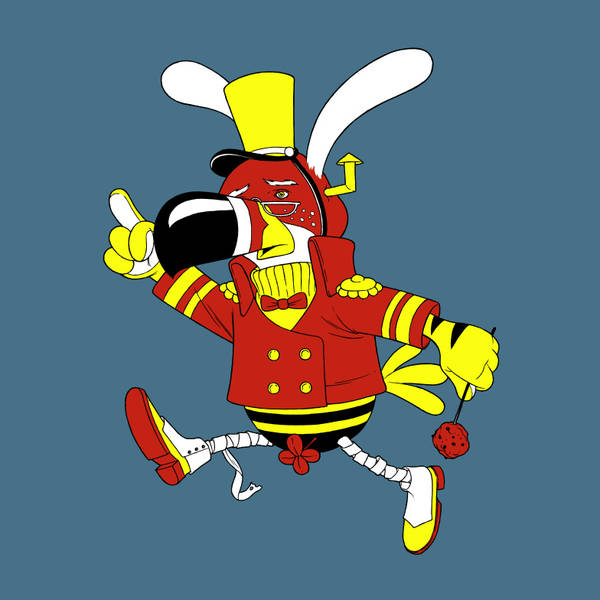 Jon sez, "What do you get when you combine just about every breakfast cereal character you know into one magnificent being? Something that's part Cap'n Crunch, part Sugar Bear, and 14 other parts. Can you name them all?" The creator is selling prints of this frankenmascot, too! FREE Thing Included! (Thanks, Jon, via Submitterator!)
|
| Posted: 31 Aug 2010 05:05 PM PDT 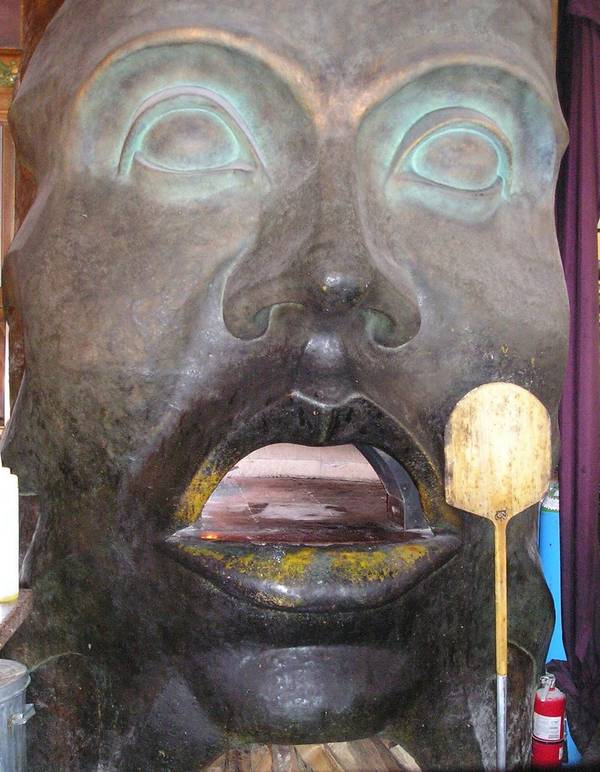 From This is Pizza's review of Marcello Pizzeria & Ristorante in Vancouver, BC, this magnifcent pizza-oven/hellmouth (thanks to Makeblog for the hellmouth comparison!). Impressions: Marcello Pizzeria & Ristorante (via Neatorama)
|
| Flurb 10: Rudy Rucker's glorious sf webzine Posted: 31 Aug 2010 05:01 PM PDT  Hurrah! Rudy Rucker's just posted the Fall/Winter issue of his glorious sf webzine Flurb, with a wicked contributor list: "Armstrong, Ashby, Byrne, Callaway, Goonan, Hendrix, Hogan, Kek, Laidlaw, Metzger, Newitz, Rucker, Saknussemm, Scholz, Shirley, Sterling, Watson."
|
| As drug violence escalates, entire length of US-Mexico border to be patrolled by unmanned drones Posted: 31 Aug 2010 04:15 PM PDT  [Image courtesy General Atomics. An artist's rendition of Predator B, the unmanned aerial drone patrolling the US-Mexico border for human and drug trafficking, and other threats.] Beginning this Wednesday, the entire 2,000 miles of border between the United States and Mexico will be patrolled by unmanned aerial drones. Three drones are already patrolling portions of that border, and a fourth Predator begins operations tomorrow out of Corpus Christi, TX, completing the full stretch of la frontera. The news came in a Department of Homeland Security announcement yesterday, along with word that 1,200 additional National Guard troops will be deployed "to provide intelligence surveillance and reconnaissance, and immediate support to counternarcotics enforcement." Those Predator B drones are made by military contractor General Atomics. You can read more about the drone specs here at the General Atomics website, and download a PDF here. Snip from Reuters: They carry equipment including sophisticated day and night vision cameras that operators use to detect drug and human smugglers, and can stay aloft for up to 30 hours at a time.All of this is part of $600 million legislation signed by President Obama earlier this month to increase border security before midterm elections in November, and in response to the ever-escalating drug war in Mexico. Just today, at least 8 people were killed when attackers hurled Molotov cocktails into a bar in Cancun, a popular tourist destination. The attack is presumed to be cartel-related. And a major drug kingpin nicknamed "The Barbie" for his light complexion was arrested this week— his takedown is seen as a badly-needed public relations coup for the Mexican government, as successive waves of horrific news hit the country. The incident took place just 100 miles from the US border. From the Christian Science Monitor: The massacre confirmed what analysts have begun to suspect (....) gangs are diversifying their criminal activities and targeting groups other than just rival drug traffickers.The lead investigator in that case "disappeared" last Friday. [inset thumbnail: courtesy El Universal. The corprses of 72 men and women presumed to have been executed by the Zetas drug gang, inside an abandoned warehouse in the town of San Fernando, just 100 miles from the Mexican border with the U.S. near the city of Matamoros, Mexico.]
|
| Brian McCarty's book of art toy photos Posted: 31 Aug 2010 03:47 PM PDT  We've featured Brian McCarty's terrific toy photography many times on Boing Boing. He's a master at setting a perfect scene and using just the right perspective to trick me into thinking that the strange vinyl characters on my shelf come alive when I'm not looking. Brian's photos are now collected in a wonderful hardcover book appropriately titled Art-Toys. The book includes more than 100 photos, each on its own page, featuring toys designed by Mark Ryden, Gama-Go, Frank Kozik, FriendsWithYou, Tim Biskup, Amanda Visell, Attaboy, and dozens of other artists. BB pal Douglas Rushkoff wrote the intro. I really dig the back-of-the-book "behind-the-scenes" snapshots that reveal the time, detail, and love that goes into every one of Brian's photos. Art-Toys by Brian McCarty (Amazon)
|
| Mystery of the Albino Redwoods Posted: 31 Aug 2010 04:18 PM PDT KQED's QUEST looks at the ultra-rare albino redwood trees: "Only a few dozen albino redwood trees are known to exist. They are genetic mutants that lack the chlorophyll needed for photosynthesis. But how and why they survive is a scientific mystery." Albino Redwoods, Ghosts of the Forest |
| My quest to recreate one of the best things I've ever tasted: omusoba Posted: 31 Aug 2010 06:43 PM PDT  (Click all photos to embiggen) Behind the gate of this shrine in Kyoto, I ate something delicious. There was a festival going on at the time. Girls were dressed in traditional yukata, with paper fans sticking out of their belts in the back. People were walking up the steps to the orange shrine, and we followed them. There was a little bit of praying going on, but mostly people were buying food from the dozens of vendors, or playing carnival games (like cork guns and goldfish scooping). I smelled lots of good things being cooked by the vendors. Something especially mouth-watering was beckoning me to follow it to its source. It was frying noodles. Yakisoba (yaki = fried, soba = noodle). But it was more than that. The woman running the grill was also wrapping the noodles in omelets, squirting a dark reddish brown sauce on top, and sprinkling it with flakes of something. I placed my order (500 yen, I think) and she prepared a giant yakisoba omelet, handing it to me on a paper plate along with a pair of wooden chopsticks. I took it into the tent set up behind the grill and sat down at one of the tables. I already knew it was going to be tasty, but after one bite, I went into a sharklike feeding frenzy. My God it was good. The noodles were salty and peppery, with a bit of sweetness, and the flakes were some kind of dried fish that enhanced the flavor. I didn't bother slowing down to savor it, as my reptile brain had taken over, commanding me to devour the irresistible concoction that had been set before me. Before I had a chance to think of taking a picture of it, it was gone. Since returning home, my thoughts have often returned to that omelet. I wanted another one. Yes, I know that it is impossible to step into the same river twice, and that the combination of my hunger level, my mental state, the ingredients and preparation that went into making the omelet, and the festival environment on that day could not be replicated. Still, I wanted to se if I could make a reasonable copy here in Los Angeles. More photos and a recipe after the jump. It took me just a few minutes to find the name of the dish: omusoba (omelet soba). I saved an omusoba recipe to Evernote and was about to head to Little Tokyo to buy yakisoba noodles, tonkatsu sauce, seaweed flakes, and bonito flakes, but Mister Jalopy told me to try 99 Ranch, a pan-Asian supermarket in Van Nuys instead, as it was closer and cheaper than the Marukai supermarket. So I went there instead. While marveling at the large variety of exotic fruits and vegetables in the produce section, and admiring the many types of live fish swimming in tanks behind the meat counter, I bought the omusoba ingredients (along with a pound of lychees and bunch of other products that looked too interesting to pass up). Back home, I got busy making omusoba.
⇑ I fried the ginger in canola oil for a little while, then added the cabbage and carrots. ⇑ While it was frying, I chopped up a pork loin cutlet that was left over from the dinner we had the night before and tossed it in the non-stick made-in-China wok that I bought for $10 at 99 Ranch (I hope it's not too toxic).
⇑ Here's what the tonkatsu sauce and bonito flakes look like.
⇑ And here is my omusoba (with seaweed flakes, bonito flakes, and tonkatsu sauce on top). Even though I didn't have all right ingredients, and the egg was overcooked, it was still delicious. I had a lot of leftover noodles, and my wife and daughter loved them. Omusoba is going to be a regular part of our diets. I think I'll ask Mark Allen of Machine Project if he'd be willing to host an omusoba festival at the gallery. Would you be interested in coming? let me know in the comments. Below, some photos of the festival and a sign for a restaurant in a little alley in Kyoto. I wish I could have eaten there, but it wasn't open when I went by.
|
| Posted: 31 Aug 2010 03:30 PM PDT Archaeologists at Ikiztepe, Turkey unearthed two glass obsidian blades they believe were used for neurosurgery 4,000 years ago. Why do they think these were tools for Bronze Age brain surgery? Because they found scarred skulls there too. New Scientist interviewed excavation director Önder Bilgi: "Scalpels and skulls point to Bronze Age brain surgery" |
| More cool rolling shutter effects Posted: 31 Aug 2010 02:19 PM PDT Last week, Mark posted a shot of a boy blinking in a photo but with his eyes open in a reflection. In the comments, several people explained that this was a rolling shutter effect. You can get something similar panning many DLSR cameras too quickly back and forth, causing a "jello" effect on solid objects. Commenter knodi shared a still of his propeller showing the same effect. You can get the same trippy effect in video based on the frame rate, as seen in Steve Talkowski's video above. |
| Posted: 31 Aug 2010 02:10 PM PDT  Cleveland, Ohio is slowly starting to honor its most important son. No, not Drew Carey (although BB loves him too). In 1933, Jerry Siegel and Joe Shuster, two boys from Jewish immigrant families who lived in the Glenville neighborhood of Cleveland, created Superman. This month, Smithsonian magazine tells the story behind the superhero, and what some citizens are doing to show their pride. The image above, from Jim Bowers/CapedWonder.com, is a fence at the address of Joe Shuster's old house. From Smithsonian: Shortly after Siegel and Shuster died in the 1990s, a... struggle for recognition of Superman's creators took place in Cleveland. Michael Sangiacomo, a comic books critic and a reporter for Cleveland's The Plain Dealer, called on the city to honor Siegel and Shuster. Nothing came of it. Every few years he would trot the idea out again, writing an article calling on Cleveland to honor the pair. "I pointed out that the Siegel house was here [the home of Joe Shuster had been torn down], and that is the home of Superman, and the city should do something."Cleveland, the True Birthplace of Superman
|
| Wikileak-proofing the Pentagon Posted: 31 Aug 2010 02:01 PM PDT "By hunting for poker-like "tells" in people's use of Defense Department computer networks, Darpa hopes to find indications of indicate hostile intent or potential removal of sensitive data." Wired reports that Ex-L0phter Peiter "Mudge" Zatko is working for DARPA to "Wikileak-proof" military networks. |
| Secret history of psychedelic psychiatry Posted: 31 Aug 2010 01:44 PM PDT A couple weeks ago, I posted about a new scientific paper looking at how an increased understanding of psychedelic drugs may lead to new anti-depressants. Over at Science Blogs, neuroscientist Moheb Costandi responds in a fascinating essay on "The Secret History of Psychedelic Psychiatry." From the article: "The secret history of psychedelic psychiatry"
|
| Improv Everywhere: Black tie at the beach Posted: 31 Aug 2010 01:27 PM PDT Several hundred merry pranksters of Improv Everywhere descended on Coney Island/Brighton Beach dressed in black tie. Founder Charlie Todd says, "We covered a mile-long stretch of beach with a diverse group of people of all ages (from babies to sixty-somethings) laying out, playing games, and swimming in the ocean, all in formal wear. Agents were instructed to find cheap tuxedos and ball gowns at thrift stores for the occasion." Black Tie Beach
|
| Another superb anti-theft sign Posted: 31 Aug 2010 12:57 PM PDT |
| The scientists who make sci-fi more real Posted: 31 Aug 2010 09:56 AM PDT Via the BB Submitterator, Boing Boing readerator "swatters" says: "I'm a big fan of BBC Radio's iPlayer, which makes available a slew of programming that its various stations have previously aired. "Scientists Go to Hollywood" is a 30-minute piece on the science behind sci-fi television and film, featuring interviews with consultants who worked on Danny Boyle's Sunshine (a terrifying survival thriller and personal favourite), and the upcoming releases Thor and Tron." |
| Historical cell phone location data is a privacy intrusion, rules NY judge Posted: 31 Aug 2010 09:00 AM PDT Judge James Orenstein in the Eastern District of New York ruled last Friday that historical cell phone location data is just as intrusive to privacy as GPS tracking. (ACLU) |
| Posted: 31 Aug 2010 08:52 AM PDT Remixer Max Tannone has just released a new project along the same lines as the lovely Mos Dub thing he did not long ago. This one's Dub Kweli. "Same concept but features Talib Kweli instead of Mos Def," Max explains. Go have a listen. |
| Posted: 31 Aug 2010 08:58 AM PDT  Anyone know the real-world story behind this one? It's been making the internet rounds of late. Update: Source. |
| Posted: 31 Aug 2010 08:44 AM PDT  "Power/Strip is a 12 outlet cruciform surge protector that easily accommodates oversize adapters while providing comprehensive protection from evil, power surges, and AC contamination." Designed by Alexander Pincus. Alas, it seems to be a proof of concept only at this time. (via BB Submitterator, thanks Arts & Leisure!) |
| Posted: 31 Aug 2010 08:37 AM PDT Following up on David Ng's great biodiversity posts, here's a nice video on graboids. If you only know about these land sharks from old skits or classic cartoons, filmmaker Frank Robnik put together this nicely animated piece that dispels many misconceptions about these misunderstood creatures. Great score by Sebastian Birkl, too! |
| Posted: 31 Aug 2010 08:22 AM PDT This dog is an accomplished merengue dancer. Video Link. (thanks, Mia Quagliarello) |
| Canadian: last chance to vote in Indigo's Teen Read poll Posted: 30 Aug 2010 05:19 AM PDT 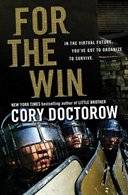 Canadians: Now that summer's over, it's your last chance to select your favorite young adult reads in Indigo's summerlong Teen Read Awards. They're soliciting Canadians' daily votes for great books for teens to read, as part of a longer and larger promotion of teen reading and literacy. I'm honored to note that my latest young adult novel For the Win is in the final heat! Canadians: Now that summer's over, it's your last chance to select your favorite young adult reads in Indigo's summerlong Teen Read Awards. They're soliciting Canadians' daily votes for great books for teens to read, as part of a longer and larger promotion of teen reading and literacy. I'm honored to note that my latest young adult novel For the Win is in the final heat! |
| Some Final Thoughts on Conventions (and a visit to Power Morphicon) Posted: 31 Aug 2010 03:54 PM PDT |
| Comic book autobiography of a teen girl's life with braces Posted: 30 Aug 2010 05:26 PM PDT  A 215-page account of a teenage girl getting braces on her teeth may seem like thin soup for a comic book memoir, but Raina Telgemeier's art and storytelling brings Smile to life. My 13-year-old daughter just got braces so I thought she would enjoy Smile, but I ended up taking it and reading it over the weekend. Raina starts the book with a visit to the orthodontist, who tells her she needs braces. That night she falls face down on the pavement and knocks her two front teeth out (actually, one falls out and the other one gets driven up into her skull bone -- yikes). So what was initially going to be a simple set of braces turns into something more complicated, which nicely parallels with the increasingly complicated issues that a young girl about to enter junior high school must deal with, including new friends and new feelings. The book ends up being less about braces and more about the day-to-day trials and triumphs of early teenagerhood. Autobiographical comic books, especially ones about people's everyday lives, are my favorite kind of comic book, and I'd place Telgemeier near the top of my list. She's great at presenting image moments. Her use of timing and framing is probably what has gotten her nominated for Eisner, Ignatz, Cybil, and Web Cartoonists' Choice awards. Her use of exaggeration (see panel four, above) is employed sparingly and to good effect. When I was finished with Smile, I felt as though I'd really gotten to know what Telgemeier's early adolescence was like. |
| You are subscribed to email updates from Boing Boing To stop receiving these emails, you may unsubscribe now. | Email delivery powered by Google |
| Google Inc., 20 West Kinzie, Chicago IL USA 60610 | |










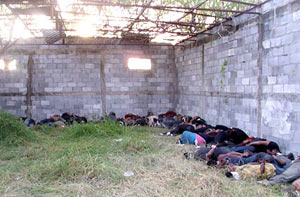 Perhaps the most gruesome of those recent revelations was the discovery just last week of
Perhaps the most gruesome of those recent revelations was the discovery just last week of 



















 What makes you think they were used for surgery?
What makes you think they were used for surgery?


 LSD therapy peaked in the 1950s, during which time it was even used to treat Hollywood film stars, including luminaries such as Cary Grant (at left, dropping acid). By then, two forms of therapy had emerged. Psychedelic ("mind-manifesting") therapy was practised mostly in North America and involved intensive psychotherapy followed by a single megadose of LSD. It was thought that the transcendental experiences induced by such large doses, as well as heightened self-awareness, would enable the patient to reflect on their condition with greater clarity. Psycholytic ("mind-loosening") therapy, on the other hand, was practised mostly in Europe, and involved regular low to moderate doses of the drug in conjunction with psychoanalysis, in order to release long-lost memories and reveal the unconscious mind.
LSD therapy peaked in the 1950s, during which time it was even used to treat Hollywood film stars, including luminaries such as Cary Grant (at left, dropping acid). By then, two forms of therapy had emerged. Psychedelic ("mind-manifesting") therapy was practised mostly in North America and involved intensive psychotherapy followed by a single megadose of LSD. It was thought that the transcendental experiences induced by such large doses, as well as heightened self-awareness, would enable the patient to reflect on their condition with greater clarity. Psycholytic ("mind-loosening") therapy, on the other hand, was practised mostly in Europe, and involved regular low to moderate doses of the drug in conjunction with psychoanalysis, in order to release long-lost memories and reveal the unconscious mind. 










No comments:
Post a Comment